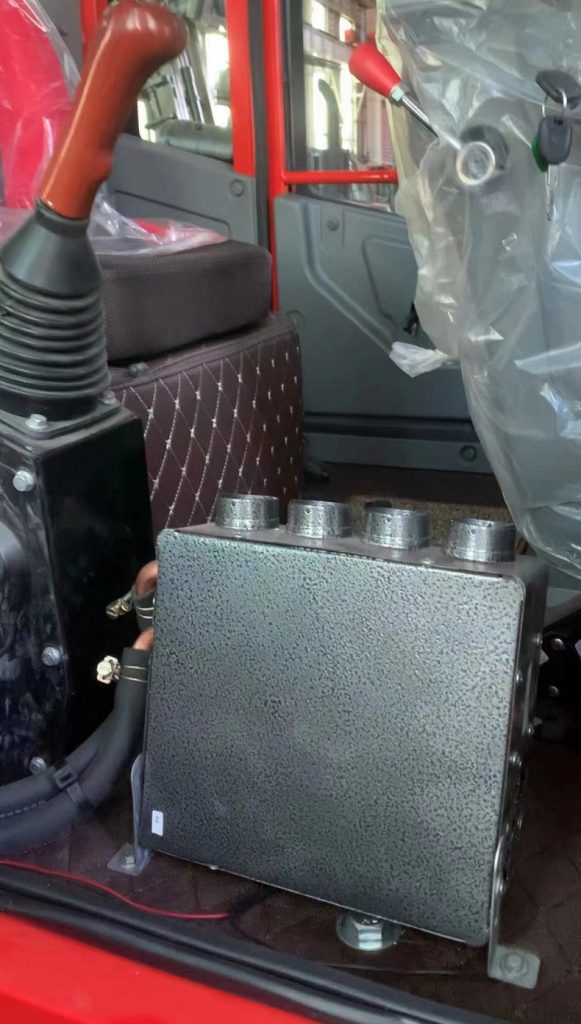Can Kaystar outdoor rough terrain forklift install a heater?
Yes, our forklifts can be fitted with heaters to increase the temperature in the workplace and increase the comfort and safety of the workers. However, the installation of the heater needs to take into account the electrical system and mechanical components of the forklift, which must be installed and debugged by professional technicians to ensure safety and reliability. In addition, when using a heater, you need to pay attention to fire prevention and harmful gas emissions.
 Heater for Kaystar rough terrain 4x4 forklifts
Heater for Kaystar rough terrain 4x4 forklifts
Generally, the Kaystar small off-road forklift heater can get heat from the engine water tank. The engine water tank is part of the cooling system of the forklift, which can obtain heat through the coolant. The heater heats the air by transferring heat from the coolant to the room air through a heat exchanger. However, there are some issues to be aware of during this process. First of all, the installation and connection of the heater must meet the requirements of the forklift manufacturer to ensure safety and reliability. Second, pay attention to the flow and temperature of the coolant to avoid adverse effects on the engine. Finally, care is needed to maintain and clean the heater to ensure it works properly.
How to install the heater for Kaystar four-wheel drive all-terrain forklift?
The following are the basic steps for installing a heater on a forklift:
- Determine the type and model of the forklift, as well as the location and size of the heater that needs to be installed.
- Prepare materials and tools, including accessories such as heaters, heat exchangers, pipes, and cables, as well as tools such as screwdrivers, wrenches, and welding equipment.
- Install the heater and heat exchanger inside the forklift, usually inside the cab or cargo box.
- Connect the pipes and cables between the heater and heat exchanger, as well as the interface with the forklift electrical system and mechanical components.
- Carry out installation and connection debugging and testing to ensure that the heater works normally and is safe and reliable.
- Carry out maintenance and maintenance on heaters and heat exchangers, including cleaning, replacing filters, checking pipes and cables, etc.
It should be noted that the installation of heaters for forklifts requires professional and technical personnel to operate to ensure safety and reliability. At the same time, it is also necessary to follow the requirements and regulations of the forklift manufacturer to ensure that the normal work of the forklift will not be adversely affected.
Click here to learn moreFAQs